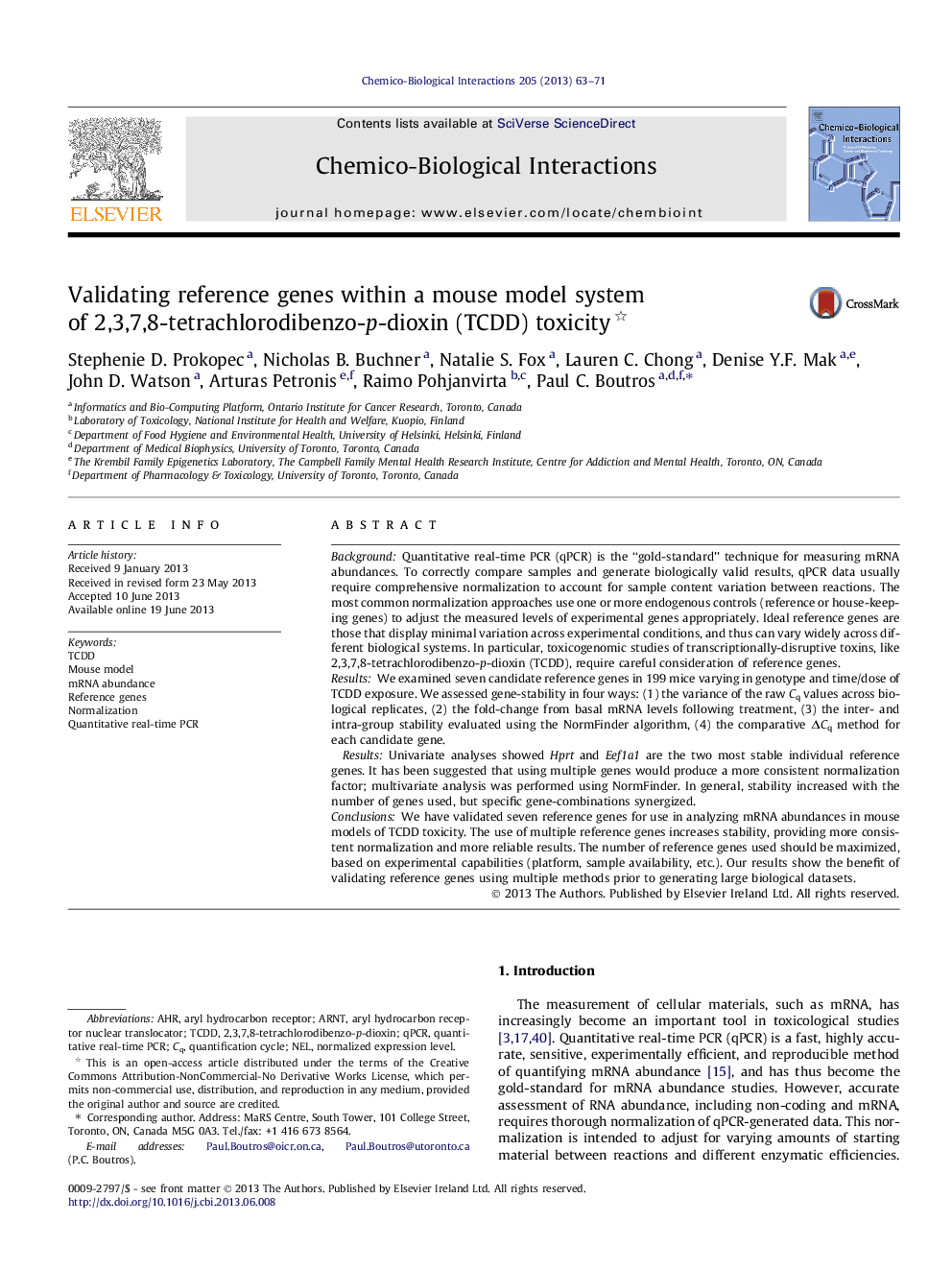| Article ID | Journal | Published Year | Pages | File Type |
|---|---|---|---|---|
| 5848211 | Chemico-Biological Interactions | 2013 | 9 Pages |
Abstract
BackgroundQuantitative real-time PCR (qPCR) is the “gold-standard” technique for measuring mRNA abundances. To correctly compare samples and generate biologically valid results, qPCR data usually require comprehensive normalization to account for sample content variation between reactions. The most common normalization approaches use one or more endogenous controls (reference or house-keeping genes) to adjust the measured levels of experimental genes appropriately. Ideal reference genes are those that display minimal variation across experimental conditions, and thus can vary widely across different biological systems. In particular, toxicogenomic studies of transcriptionally-disruptive toxins, like 2,3,7,8-tetrachlorodibenzo-p-dioxin (TCDD), require careful consideration of reference genes.ResultsWe examined seven candidate reference genes in 199 mice varying in genotype and time/dose of TCDD exposure. We assessed gene-stability in four ways: (1) the variance of the raw Cq values across biological replicates, (2) the fold-change from basal mRNA levels following treatment, (3) the inter- and intra-group stability evaluated using the NormFinder algorithm, (4) the comparative ÎCq method for each candidate gene.Univariate analyses showed Hprt and Eef1a1 are the two most stable individual reference genes. It has been suggested that using multiple genes would produce a more consistent normalization factor; multivariate analysis was performed using NormFinder. In general, stability increased with the number of genes used, but specific gene-combinations synergized.ConclusionsWe have validated seven reference genes for use in analyzing mRNA abundances in mouse models of TCDD toxicity. The use of multiple reference genes increases stability, providing more consistent normalization and more reliable results. The number of reference genes used should be maximized, based on experimental capabilities (platform, sample availability, etc.). Our results show the benefit of validating reference genes using multiple methods prior to generating large biological datasets.
Keywords
Related Topics
Life Sciences
Environmental Science
Health, Toxicology and Mutagenesis
Authors
Stephenie D. Prokopec, Nicholas B. Buchner, Natalie S. Fox, Lauren C. Chong, Denise Y.F. Mak, John D. Watson, Arturas Petronis, Raimo Pohjanvirta, Paul C. Boutros,
